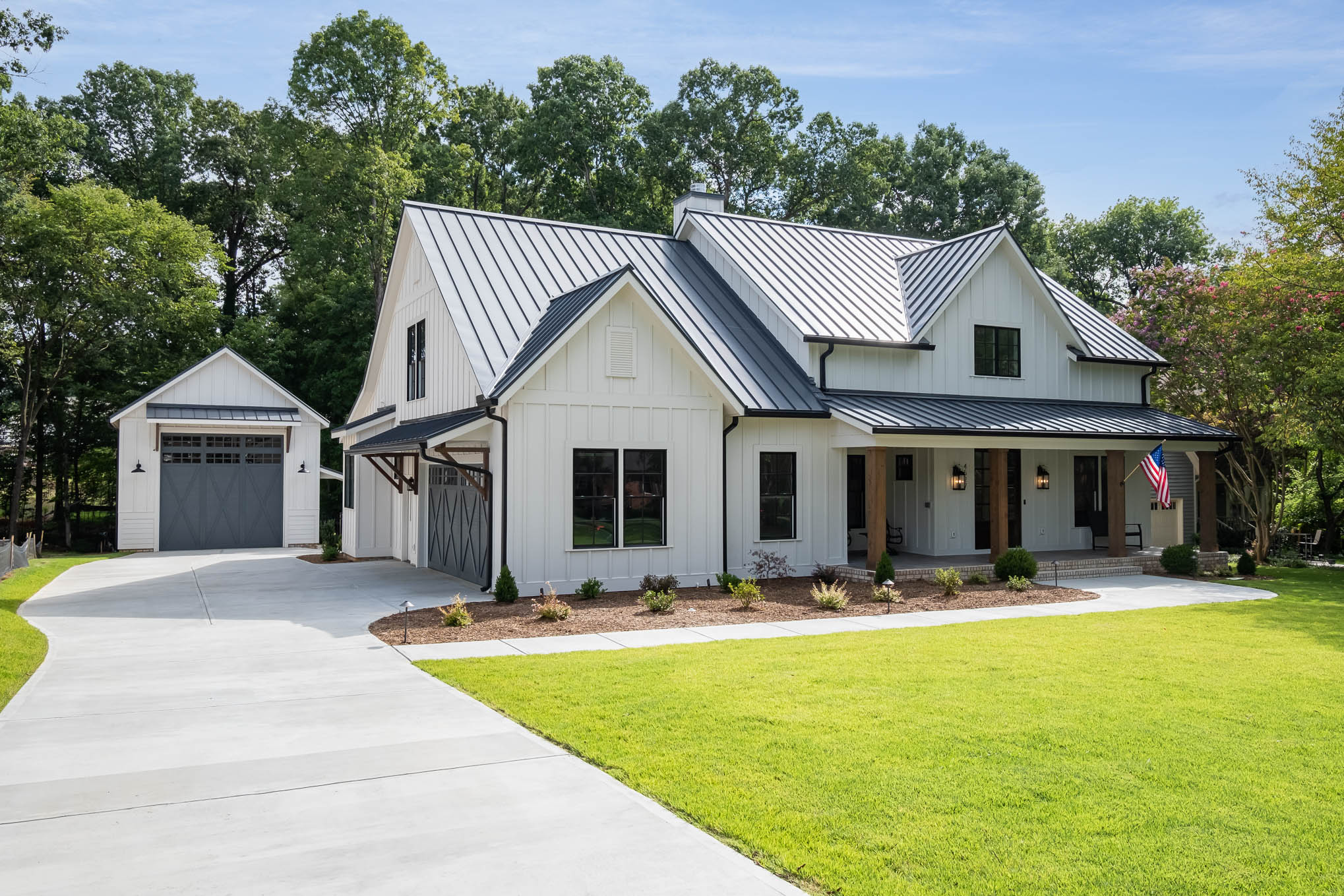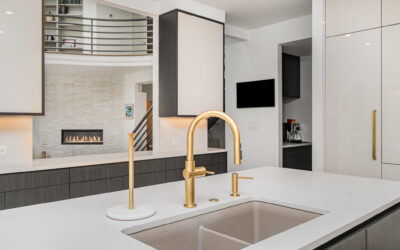A Note From Heather
How to Peacefully Merge Styles When Combining Households
With summertime upon us, tis the season for cohabitation – in fact, a full 50% of weddings are held between the months of May and September.
We’ve had a number of clients merging households recently, which has inspired conversations about how to best bring together different styles, furniture and design pieces. This can apply to not only new couples, but also families that are blending for the first time.
While moving in and beginning your new life with your spouse or partner can be an exciting and memorable time, you may struggle when it comes to integrating your very different tastes while outfitting a new home or apartment. Read on to learn more about some of the many important points you’ll want to consider when merging households for the first time.
Happy Summer!
Heather
 Top 20 Things You’ll Want To Consider When Merging Households
Top 20 Things You’ll Want To Consider When Merging Households
#1: Start With A Floor Plan. Having a floor plan mapped out can let you experiment with different furniture or functional design arrangements before you even begin packing. Even if you are staying in a current space and just moving one partner in, you are still changing the layout as you bring new items in. Play with the possibilities ahead of time.
#2: Decide What To Purge (Or Store). Many couples find that they have so many duplicates of common appliances, furniture pieces and common household items. From coffee makers to sofas, to bed frames and box springs, decide which of these items to keep and use and which to donate. This can quickly pare down the amount you will need to move into your new shared home.
#3: Make A Love List. Deciding on a few must-keep items early in the process can make it easier to compromise on furniture or appliances your partner vetos later. Together, decide on a list of your favorite pieces to build around.
#4: Be Mindful Of Your Budget. Getting married or living together often means combining finances; however, even the most generous budget still has limits, and you’ll want to keep factors like your job stability and future plans in mind when deciding to drop thousands on a couple of new couches or kitchen appliances. Decide what you can manage financially now and set a budget. Then, keep a list of ideas you have as you walk through the space with fresh eyes to save for later.
#5: Make A Renovations List. Spending on new furniture could leave you without much extra cash for needed repairs or renovations. By making a list of the renovations you’d like to eventually perform, you’ll be able to keep these goals in mind when making other monetary decisions.
#6: If Moving: Box Now, Haul Later. Having your smaller items boxed up early in the moving process can give you the time you need to focus on the logistics of moving larger items like beds and couches. Knick knacks and decor should come last in your transition process.
#7: Encourage New Items. If your partner is moving into your place rather than vice versa, you’ll want to encourage him or her to bring along some unique and loved items that can help make your house “home.” Also consider purchasing new items that will create new memories for the space. This is especially important for children if you are merging families.
#8: Prioritize Most-Used Rooms. If your family spends the majority of the day in the kitchen or living room, it makes little sense to focus your designing and moving efforts on the bedrooms and bathrooms. By first outfitting and merging the rooms that are most frequently used, you’ll make your transition smoother and more fun!
#9: Create Solo Spaces. Not every room needs to be a multi-purpose one; by creating a “man cave,” screened-in porch, or kids’ rec room, you’ll ensure that everyone in your household has an opportunity to seek out privacy when needed.
#10: Agree On A Color Scheme. By keeping the colors within your home consistent, you’ll find it much easier to mix and match various items, even if your tastes and styles are otherwise worlds apart. Keeping guest rooms and areas neutral colors can improve your odds of matching.
#11: Be Open To Ideas. Your partner may have ideas on how to best use your existing space; by remaining open to constructive suggestions, you may find a new great furniture arrangement or new storage ideas.
#12: Consider Renovation Space Needs. When planning for temporary or long term overnight guests (like grandparents or friends), you’ll want to ensure a comfortable sleeping arrangement. If your home is already somewhat short on space, consider renovations before moving in to match your needs.
#13: Let Your Long-Term Guests Decorate. If you’re planning to have an adult child, parent, or other friend or relative move in for the long term, keeping their room or living space in a neutral design and color can allow them to customize it and feel more at home.
#14: Find Balance In Imperfections. Even if your taste is wildly different from others in your home, compromise is the name of the game. Although matching design was popular a few decades ago, today’s trendy styles fuse a number of different elements, textures and colors with a wider appeal.
#15: Find Your Style. When merging households, if you don’t have some type of theme envisioned for your living space, you’ll want to consider using Pinterest or Houzz to save rooms that appeal to you. This helps to get a better idea of the styles you’re both drawn to and you can use this as a guideline when blending your households.
#16: Make Old Things New Again. If you simply can’t stand some of the items your partner plans to bring, spend some time thinking about appropriate recycling or refurbishing methods. You may find that some fine-grit sandpaper and a new coat of paint are all that’s needed to turn an old dresser brand-new again, keeping both you and your spouse happy.
#17: Consider The Functionality of Renovations. Before you move in, walk through and pay attention to functionality. If you’re super tall, you may need new shower heads, larger furniture or heightened ceilings and doorways. If you have a family member in a wheelchair, you may need your home to be accessible for someone with mobility issues. If you have kids, you may need better sight lines throughout the house. Keeping future functionality in mind can ensure you invest in lasting renovations.
#18: Find a Balance. Combining households can be tough. When conversations get too heated, know when to take a break or find a compromise. If your partner is not willing to negotiate on getting rid of their recliner, find a space for it and mix your style with a similar colored couch that appeals to your taste on the other side of the room.
#19: Plan For Seasonal Rotation. To accommodate your different styles, you can rotate your decorative items by season rather than displaying them all at once. Each of you can express your style for dedicated times each year and it will limit the clutter of having too many knick knacks.
#20: Remember Your Pets. If you’re adding (more) furry friends to your household or relocating current ones, ensuring they have a private and safe place can help them become quickly acclimated. Consider where they will come in and out of the house and whether you need a utility area for muddy paws. Add fencing or consider where pet beds, litter boxes and food bowls will go.
Cohabitation can be a challenging but highly rewarding process; after all, humans are naturally social creatures. However, if you and your future housemate(s) are still worlds apart when it comes to decorating style, you may want to enlist the help of a neutral third party – a designer – who can provide you with an expert and unbiased opinion. If that is the case for you, call us at 704.708.4466 and we would be happy to help you merge your styles!









